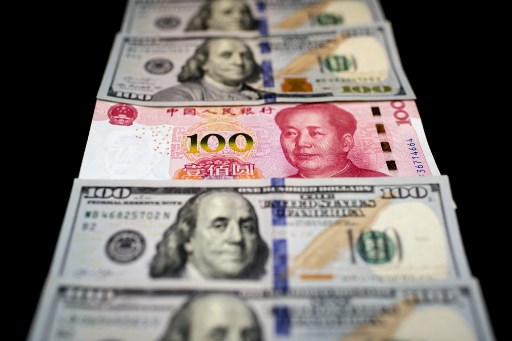
403
Sorry!!
Error! We're sorry, but the page you were
looking for doesn't exist.
China’s yuan falls 8 pips against US dollar on Wednesday
(MENAFN) On Wednesday, the central parity rate of the Chinese currency renminbi, also known as the yuan, experienced a minor weakening, dropping by 8 pips to 7.1077 against the U.S. dollar, according to the China Foreign Exchange Trade System. This adjustment in the central parity rate reflects the subtle shifts in the exchange rate dynamics between the yuan and the U.S. dollar in the foreign exchange market.
Within China's spot foreign exchange market, the yuan is subject to a controlled trading band, allowing it to fluctuate within a predetermined range of 2 percent from the central parity rate on each trading day. This mechanism provides a degree of flexibility in the exchange rate regime, enabling the currency to respond to market forces while still maintaining stability.
The central parity rate of the yuan against the U.S. dollar is calculated based on a weighted average of prices offered by market makers before the opening of the interbank market each business day. This rate serves as a crucial reference point for currency trading activities and helps guide market participants in their decision-making processes.
By adjusting the central parity rate in response to prevailing market conditions, Chinese authorities aim to ensure that the exchange rate remains in line with economic fundamentals and policy objectives. This approach helps promote stability in the currency market and supports the overall functioning of China's financial system.
Within China's spot foreign exchange market, the yuan is subject to a controlled trading band, allowing it to fluctuate within a predetermined range of 2 percent from the central parity rate on each trading day. This mechanism provides a degree of flexibility in the exchange rate regime, enabling the currency to respond to market forces while still maintaining stability.
The central parity rate of the yuan against the U.S. dollar is calculated based on a weighted average of prices offered by market makers before the opening of the interbank market each business day. This rate serves as a crucial reference point for currency trading activities and helps guide market participants in their decision-making processes.
By adjusting the central parity rate in response to prevailing market conditions, Chinese authorities aim to ensure that the exchange rate remains in line with economic fundamentals and policy objectives. This approach helps promote stability in the currency market and supports the overall functioning of China's financial system.

Legal Disclaimer:
MENAFN provides the information “as is” without warranty of any kind. We do not accept any responsibility or liability for the accuracy, content, images, videos, licenses, completeness, legality, or reliability of the information contained in this article. If you have any complaints or copyright issues related to this article, kindly contact the provider above.
Most popular stories
Market Research

- Manuka Honey Market Report 2024, Industry Growth, Size, Share, Top Compan...
- Modular Kitchen Market 2024, Industry Growth, Share, Size, Key Players An...
- Acrylamide Production Cost Analysis Report: A Comprehensive Assessment Of...
- Fish Sauce Market 2024, Industry Trends, Growth, Demand And Analysis Repo...
- Australia Foreign Exchange Market Size, Growth, Industry Demand And Forec...
- Cold Pressed Oil Market Trends 2024, Leading Companies Share, Size And Fo...
- Pasta Sauce Market 2024, Industry Growth, Share, Size, Key Players Analys...





















Comments
No comment